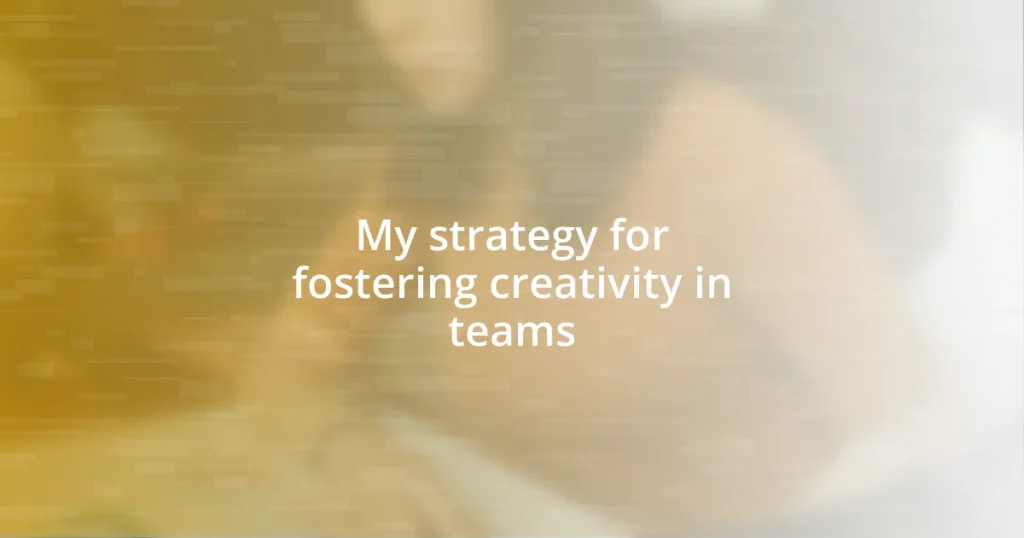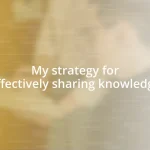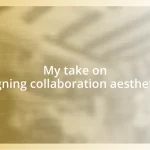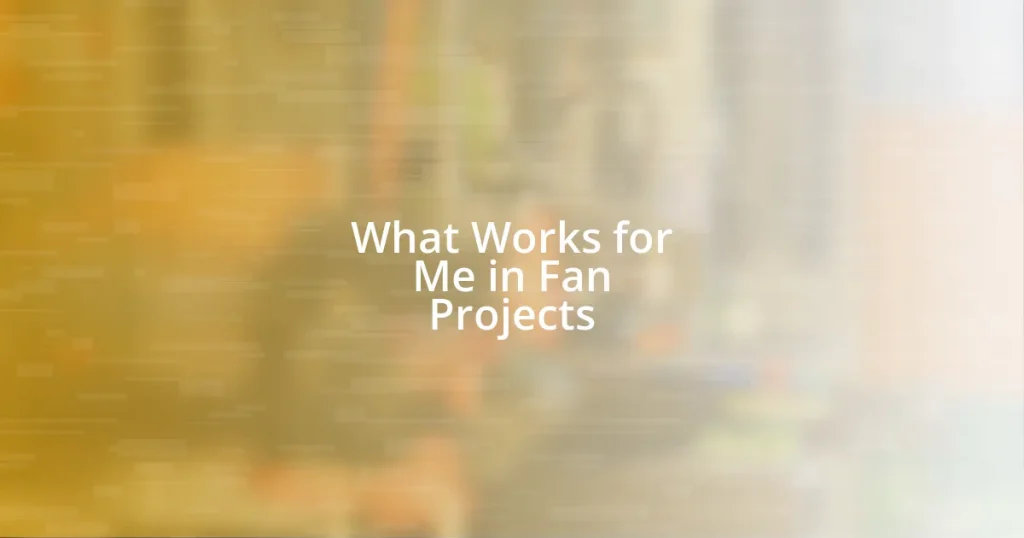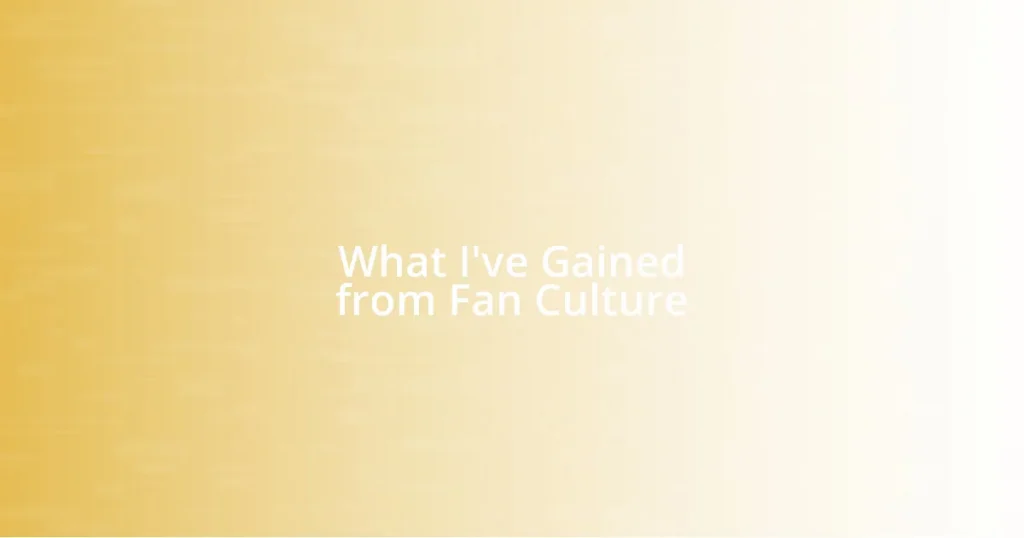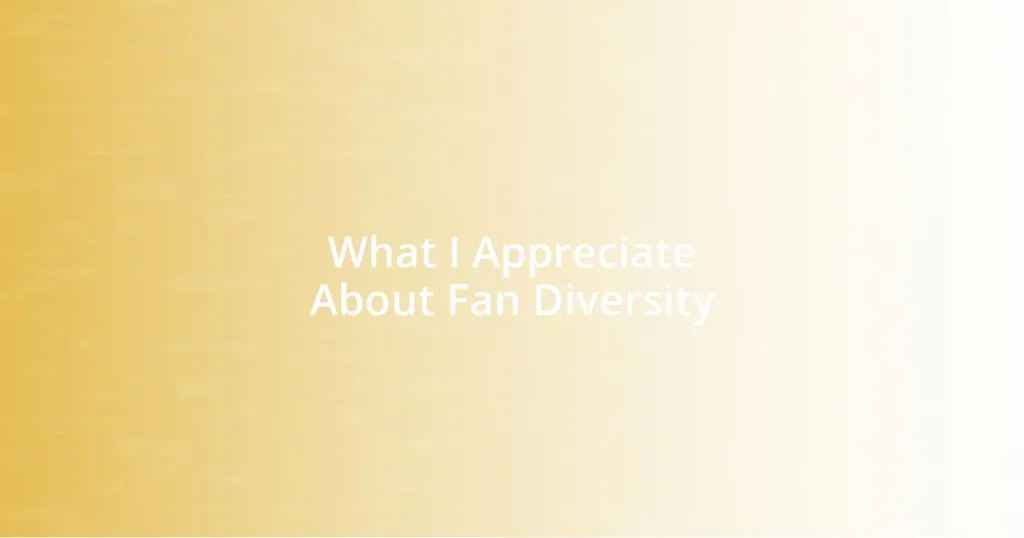Key takeaways:
- Creativity thrives in teams where members feel safe to express their ideas without fear of judgment, leading to innovative breakthroughs.
- Common barriers to creativity include fear of judgment, rigid structures, lack of trust, poor communication, and individual stress; identifying these is crucial for fostering an inventive environment.
- Regular feedback, celebrating contributions, and creating specific brainstorming sessions significantly enhance idea generation and collective creativity within teams.
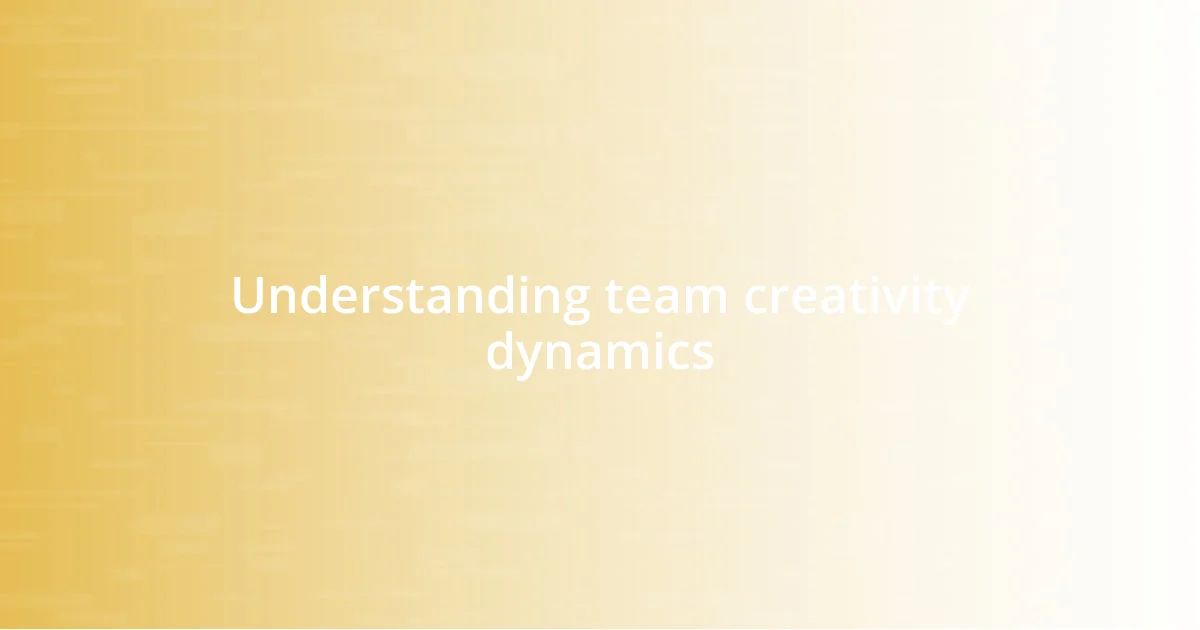
Understanding team creativity dynamics
When I think about the dynamics of team creativity, I often recall a project where diverse personalities clashed yet ultimately thrived. Each member brought a unique perspective, from the analytical thinker to the free-spirited dreamer. Why does this matter? Because creativity flourishes when team members feel safe to express their ideas without judgment.
Observing how team interactions unfold can be fascinating. I once witnessed a brainstorming session where someone initially hesitated to share an unconventional idea, fearing it wouldn’t resonate. Yet, when I encouraged open dialogue and emphasized that all ideas were valuable, that one suggestion ignited a cascade of innovative thoughts. It made me realize: the willingness to share, regardless of social boundaries, can transform a team’s creative potential.
It’s crucial to understand that creativity isn’t a linear process. It often resembles a dance; sometimes, it flows effortlessly, while other times, it feels clumsy as we try to sync our rhythms. Have you ever felt that awkwardness in a group setting? Those moments can feel uncomfortable, but I’ve learned they often lead to the most profound breakthroughs. Embracing both the chaos and harmony of team dynamics can significantly enhance our collective creativity.
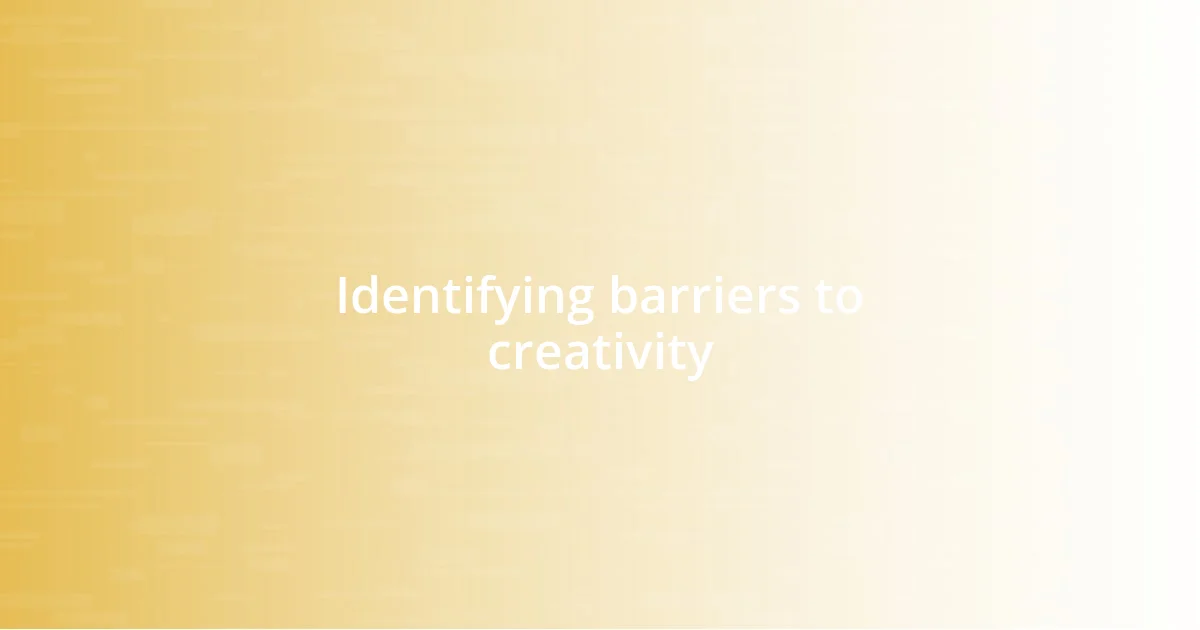
Identifying barriers to creativity
Identifying the barriers to creativity in teams can be eye-opening. Often, these obstacles aren’t overt but rather subtle influences that stifle innovation. I remember working with a group where constant micromanagement by the team leader created an atmosphere of tension and fear. It discouraged team members from taking risks, and ultimately, that fear muted the flow of ideas. Recognizing these barriers early on is essential for fostering an environment where creativity can thrive.
Here are some common barriers to creativity I’ve encountered:
- Fear of Judgment: Team members may hold back innovative ideas due to the potential for criticism.
- Rigid Structures: Strict guidelines can limit thinking outside the box, preventing unique solutions from emerging.
- Lack of Trust: When trust is absent, collaboration suffers, and individuals may avoid contributing for fear of undermining their peers.
- Poor Communication: Misunderstandings can lead to frustration, making it harder for teams to connect creatively.
- Individual Stress: High levels of stress can block creative thinking, as team members are preoccupied with their own challenges.
By pinpointing these barriers, I believe teams can take actionable steps toward reaching their full creative potential.
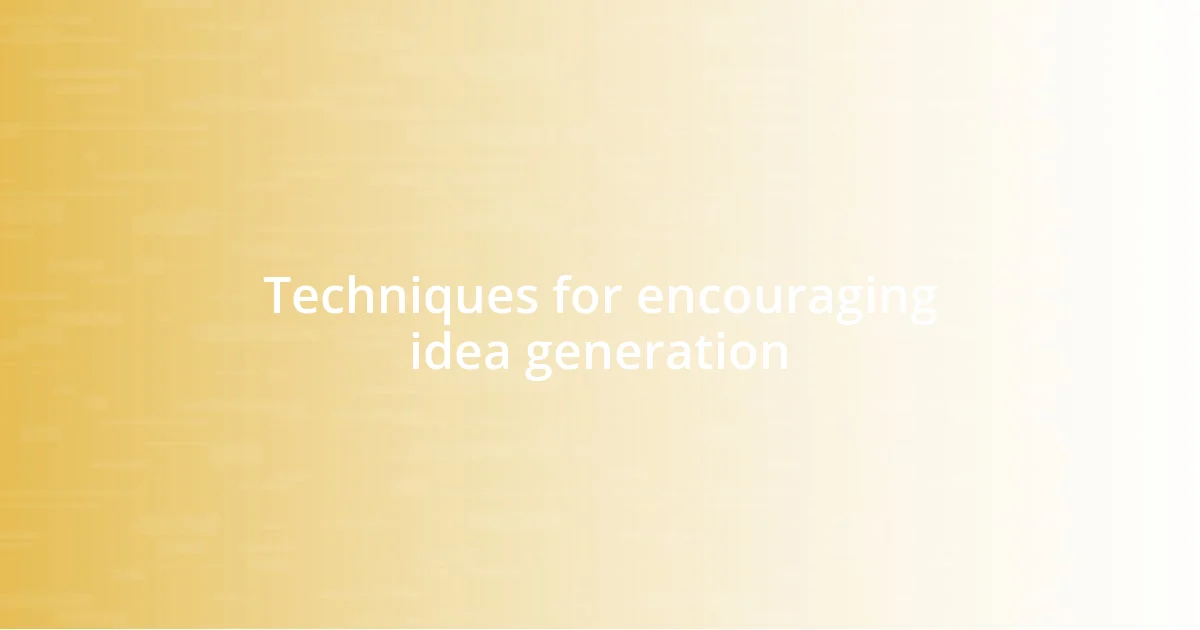
Techniques for encouraging idea generation
Fostering an environment where ideas can flow freely is vital for any team. One technique I’ve employed is the “brainwriting” method, where individuals jot down their ideas anonymously. I once facilitated a session where participants wrote down their suggestions without immediate feedback. This approach led to surprising entries, including concepts that individuals might have felt too shy to share aloud. It demonstrated to me that when there’s a veil of anonymity, creativity can flourish without the pressure of judgment.
Another effective technique is to embrace diversity of thought through role-storming. I vividly recall a workshop where team members assumed various personas, which brought fresh perspectives to our discussions. By stepping into someone else’s shoes, we sparked more innovative solutions than I could have imagined. This exercise showed me that sometimes, taking a different angle can shed light on unique possibilities that aren’t typically visible.
Lastly, regular creativity challenges can be an exhilarating way to ignite idea generation. I’ve implemented weekly “innovation sprints” in my teams where we dedicate a short period to brainstorm around a specific theme. The energy in these sessions is contagious, and I’ve noticed that even the quieter members often contribute brilliant insights. Creating a scheduled time for creativity not only demonstrates its value but also encourages consistent participation.
| Technique | Description |
|---|---|
| Brainwriting | Team members jot down ideas anonymously to promote open sharing. |
| Role-storming | Participants adopt different personas to explore new perspectives and solutions. |
| Innovation Sprints | Regular, timed brainstorming sessions focusing on specific themes to foster participation and creativity. |
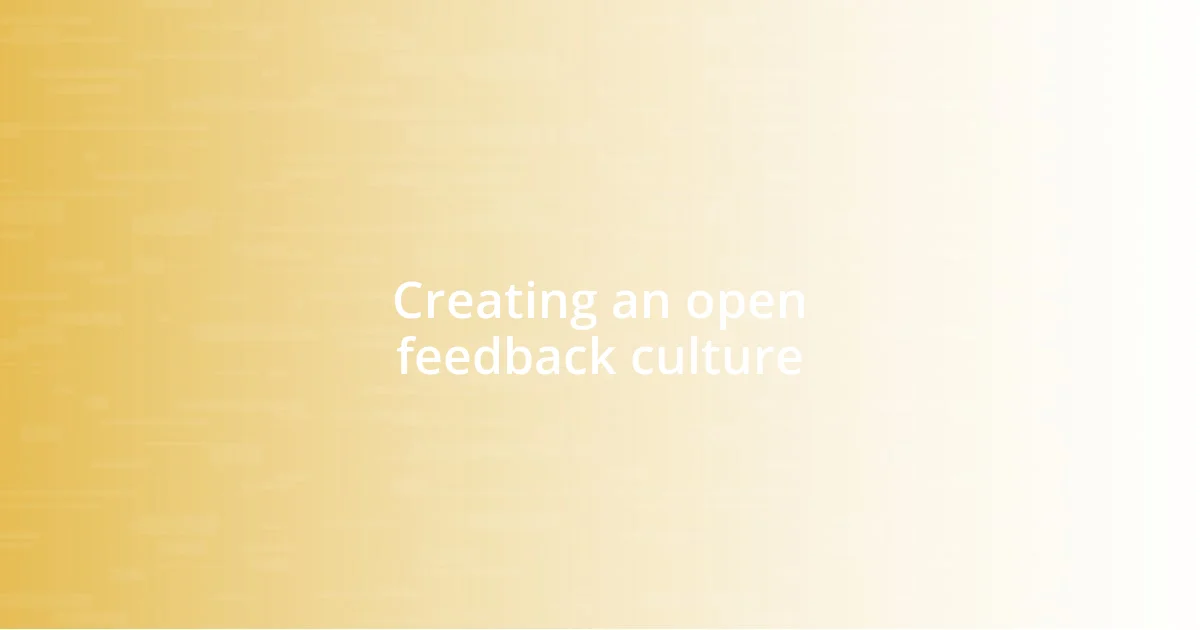
Creating an open feedback culture
Creating an open feedback culture is vital for nurturing creativity within teams. It’s so important to make feedback a regular part of the conversation. I recall a project where we held bi-weekly feedback sessions. Initially, these meetings felt a bit awkward, but gradually, team members began to share openly. The growth I witnessed was palpable; constructive feedback transformed into a powerful tool for collaboration. Is there anything more exhilarating than seeing ideas evolve through collective input?
Another key aspect is to celebrate feedback, both giving and receiving it. I remember when we introduced a “kudos” board in our office, where team members could publicly appreciate each other’s contributions and suggestions. This simple practice not only boosted morale but also encouraged team members to seek out feedback. The emotional impact was huge—people felt valued and more inclined to share their thoughts without the fear of being shot down.
Finally, consider how vulnerability plays a role in fostering this culture. I’ve learned that admitting when I’m wrong or when an idea didn’t pan out creates a safe space for others to do the same. It’s a powerful moment when a team realizes that failure is just another step toward innovation. Have you ever noticed how teams that embrace vulnerability are often the most creative? For me, this dynamic is not just about sharing feedback but also about building trust and resilience within the team.
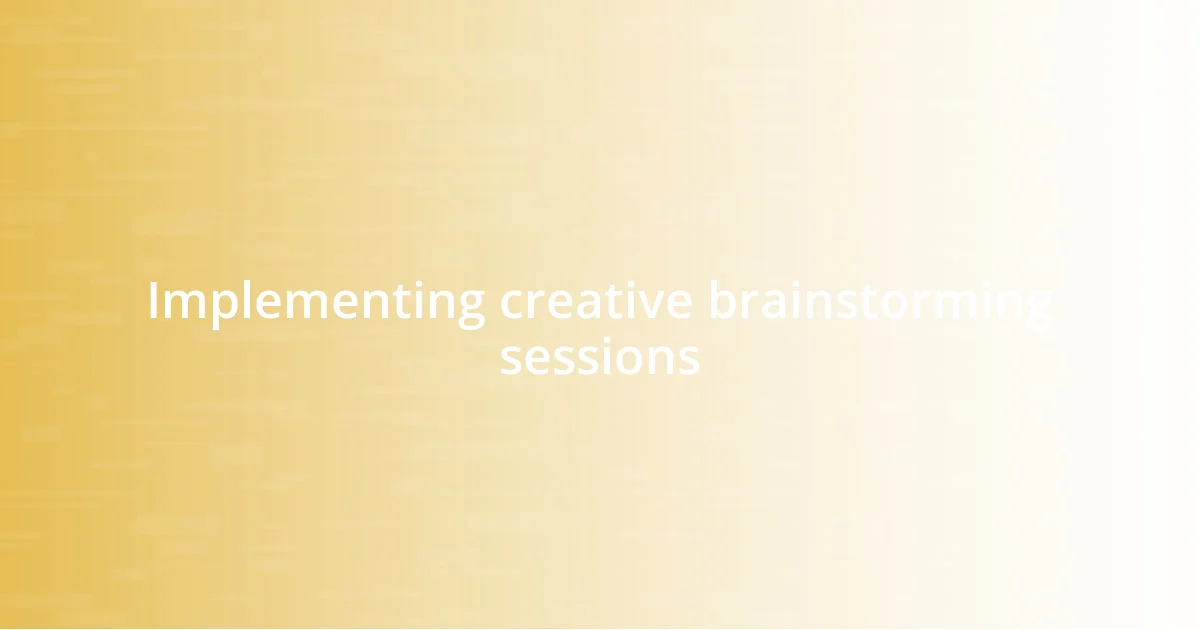
Implementing creative brainstorming sessions
When implementing creative brainstorming sessions, it’s essential to set the right tone. I remember a time when I kicked off a session with a simple icebreaker, asking everyone to share their most unusual idea from previous projects. The immediate laughter and camaraderie that followed created an atmosphere where everyone felt relaxed and willing to share. Isn’t it fascinating how a little laughter can unlock a flood of creativity?
I also found that dedicating a specific time and space for these sessions makes a significant difference. At one marketing agency I worked with, we transformed a dull conference room into a vibrant creative space, complete with art supplies and comfy seating. This change alone sparked energy I hadn’t seen in previous meetings. Have you ever noticed how the environment can deeply influence your thought process? It’s amazing how changing the scenery can help break mental barriers and inspire new ideas.
Furthermore, it’s worth noting that inviting different voices into the room can lead to unexpected breakthroughs. In one memorable session, we included members from other departments, enticing them to share their perspectives on a project. I vividly recall how an engineer mentioned a tech solution we hadn’t considered, which ended up being a game-changer. This experience reinforced my belief that innovation thrives when diverse viewpoints intersect. How often do we underestimate the wealth of ideas outside our immediate circle?
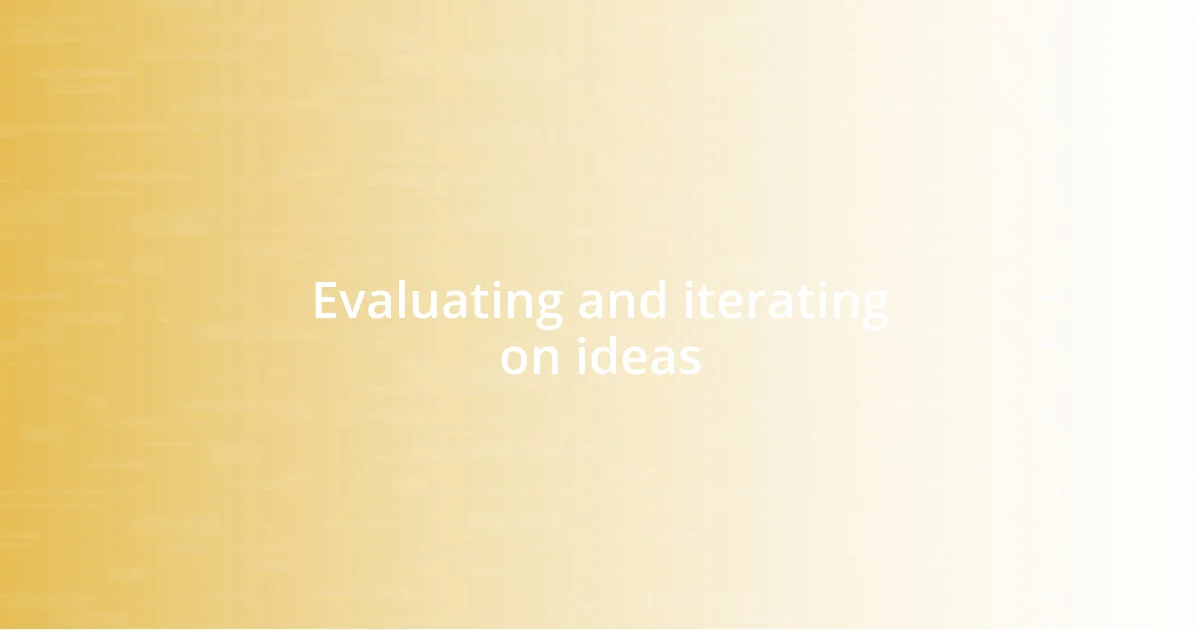
Evaluating and iterating on ideas
Evaluating and iterating on ideas is crucial for a productive creative process. I remember when we tackled a major campaign and decided to review our initial concepts after a week of brainstorming. Instead of being defensive about our ideas, we approached the evaluation as a collaborative puzzle where everyone contributed to reworking our strategies. What surprised me most was how seemingly small adjustments transformed our ideas into something much bigger and more impactful, highlighting the power of collective refinement.
As we discussed the strengths and weaknesses of our concepts, it became clear that iteration is more than just a step—it’s a mindset. I’ve seen how empowering it is to ask open-ended questions like, “How can we enhance this idea?” or “What if we took a completely different approach?” This shift in perspective often opened up new avenues I hadn’t considered before. Isn’t it interesting how simply reframing a question can lead to lightbulb moments in a team?
Sometimes, the real magic happens when we embrace continuous feedback loops. After launching a small initiative, we sent out a survey to gather insights from team members about how it could be improved. The responses were overwhelming and, frankly, eye-opening. I learned that by welcoming ongoing evaluation, we didn’t just refine our ideas; we built a culture of innovation. It makes me wonder: how many great ideas remain buried simply because we hesitate to ask for feedback?
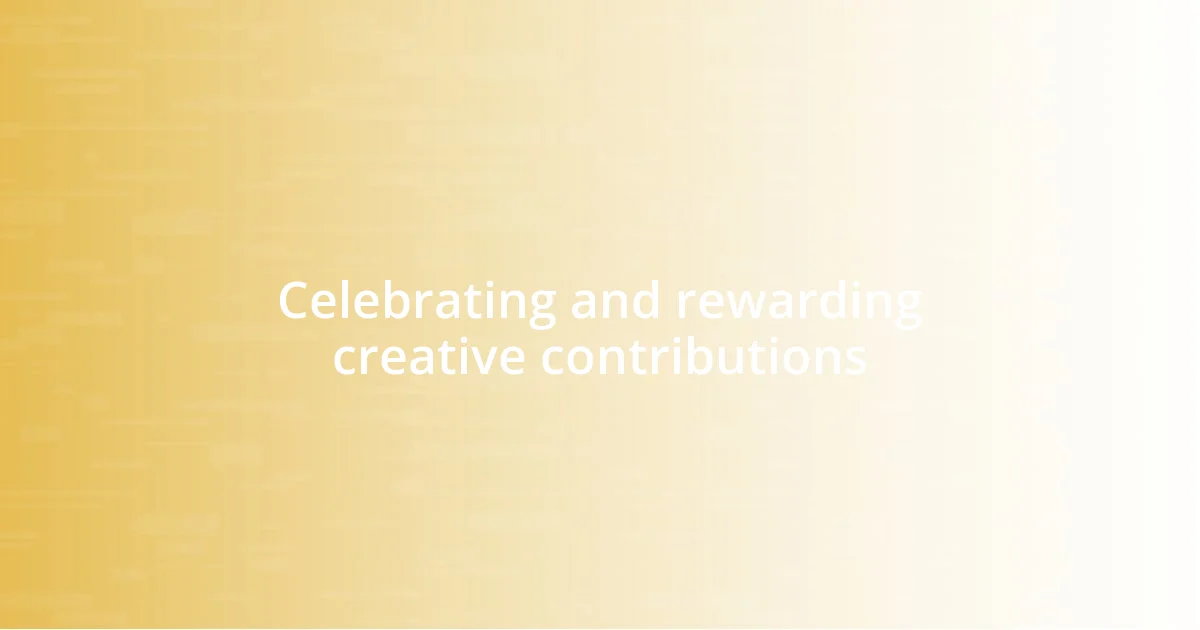
Celebrating and rewarding creative contributions
Recognizing and celebrating creative contributions can invigorate a team’s spirit. I once experienced the power of a simple acknowledgment during a team meeting when a colleague presented a bold idea that sparked a significant shift in our project direction. The applause and genuine cheers that followed not only made that colleague beam with pride but also inspired everyone in the room to think more fearlessly. Have you ever noticed how a little validation can embolden creativity within a group?
Moreover, I’ve learned that introducing tangible rewards can further motivate team members to innovate. At one of my previous jobs, we instituted a monthly “Creative Champion” award, which came with a small gift card and a spotlight in our internal newsletter. The excitement around this initiative encouraged everyone to share their wildest ideas, knowing that even small contributions would be celebrated. Isn’t it rewarding to create an environment where creativity thrives and is recognized?
Ultimately, celebrating these contributions sets a precedent for a culture rich in innovation. I recall a time when we hosted a fun “Idea Showcase,” allowing team members to present their projects to the entire organization, complete with snacks and cheers. Watching my colleagues take pride in showcasing their work reaffirmed my belief that recognition can create a vibrant feedback loop where ideas flourish. How often do we stop to acknowledge the creativity around us? Even the most basic forms of recognition can amplify the creative drive within any team.










